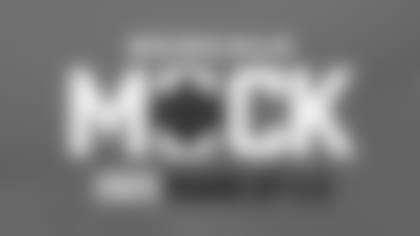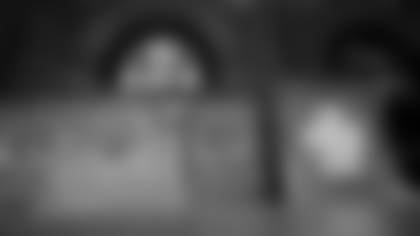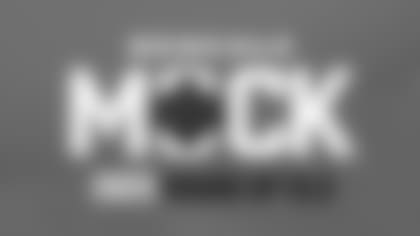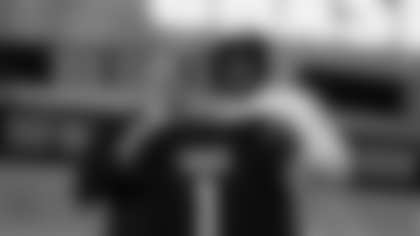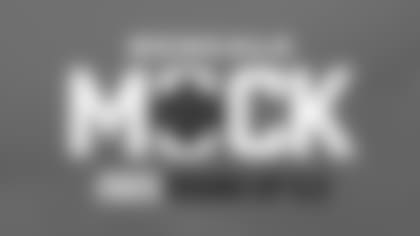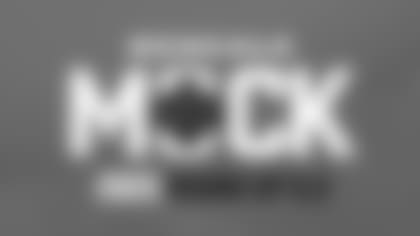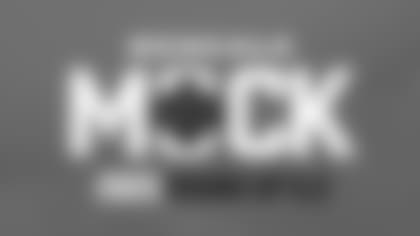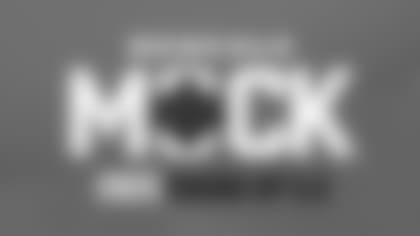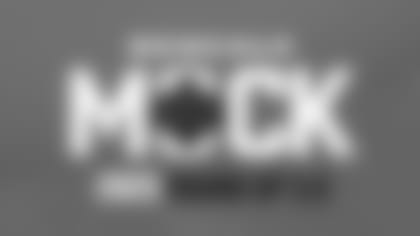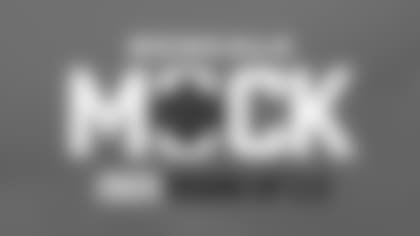Around Paul Brown Stadium, the 2009 Under Armour Senior Bowl is known as "The Camel Game."
When Bengals assistant public relations director P.J. Combs approached his head coach about the NFL Network's request to ask him questions live during the all-star game, Marvin Lewis told him, "It's the nose of the camel, P.J. Once you let that camel put his nose inside your tent, it's hard to stop the rest of him from coming in."
Lewis agreed to take the in-game inquest and the NFL's tent continues to mushroom even in the midst of Championship Week and an NFL-NFL Players Association summit in the shadow of a lockout. The Senior Bowl gets bigger and bigger, but with their third assignment coaching the North in the last seven years, the Bengals have streamlined their football operation enough to turn the weeklong scouting extravaganza into an extended overnight stay when they hit Mobile, Ala., this Sunday. When the coaching staff gets assigned, so do equipment, video and training personnel.
And now, PR.
"That tells you what you need to know right there," Combs says. "When we first did this (in 2004), no one from PR traveled."
But now with NFL Network beaming each North and South practice (as well as the 4 p.m. game on Jan. 29) and countless of college and pro web sites credentialed for the week, it has turned into another frenzied media event instead of what it was five years ago, which was a relaxed cross between a coaching job fair and southern fried all-star game.
"A lot of teams come down here and bring everything they need for a regular NFL game," says Jim Sudeiha, the North's long-time equipment manager. "But the Bengals know exactly what they need. They know the routine. And we appreciate that because we have to move them around."
The point man, as always, is business manager Bill Connelly, who has been coordinating Bengals trips since the Jimmy Carter administration. He'll do everything from making rental car assignments (knowing the coaches prefer cars to player buses) to dinner reservations and all the stuff that falls through the cracks.
He spent a chunk of Wednesday talking to Sudehia about bus arrangements. He needs one from Senior Bowl headquarters to the game and then one to the airport after the game for an 11 p.m. arrival back in Cincinnati.
"It is and isn't as challenging as a regular road trip," Connelly says. "You've got 40 people instead of 140, but you're there for a week instead of a night."
Since they don't have to worry about the players' gear, Bengals head equipment manager Jeff Brickner and assistant Adam Knollman figure the truck is going to haul about 5-6,000 pounds to Mobile, which is about 10,000 pounds less than what they take overnight to a game. The truck should arrive before the contingent lands Sunday morning via chartered jet.
"We'll take some extra helmets in case some college ones don't show up; and 200 footballs," Brickner says. "We need 100, but we're taking an extra 100 in case they get wet. The main thing is to make sure the coaches are taken care of with their practice gear and we're taking stuff for practice like (padded) shields, the rolling balls the defensive linemen and linebackers use to simulate getting off blocks, and the chute for linemen (to make them stay low). And you have to pack clothes for everything from 30 to 60 degrees."
The major reason the Bengals don't take as much as they did in 2004 is because all the tape was on, well, tape. Now the tape is digitized and downloaded on laptops instead of overloaded on trucks. Missing from this trip are the trappings of The Tape Era, among them the bulky projectors, big beta decks, boxes upon boxes of tapes, as well as editing equipment.
Video director Travis Brammer figures they'll take five times the information on this trip with much less equipment. They're even scaled back from two years ago. Instead of loading all the NFL and self-scout tape on a huge 40-terabyte server, those items now go on individual hard drives while the entire 2010 college season is going to go on the smaller 10-terabyte server.
"This way the coaches can familiarize themselves with the players as well as show how they want things done," Brammer says. "Before we go, we'll set up each coach's laptop with what he wants and when we get there we'll set up the eight laptop stations by position and it should only take a couple of hours to set up the network."
Brammer, assistant Kent Stearman and Scotty Fitch plan to work out of the four meeting rooms at Senior Bowl headquarters, but they'll do a lot of their work on the 10-minute drive back from Ladd-Peebles Stadium after the morning practices.
"The idea is the same down there as it is here: Get it downloaded and up on the network as soon as we get back so the coaches and scouts can see it right away and get set up for the meetings with the players," Brammer says. "We'll exchange film with the South staff (coached by the Bills) and that gives our guys a little bit of an advantage to get started looking at those guys, too."
Eventually, every NFL team is going to get the North practices that Brammer and Co., shoot, as well as the South version. They'll use three cameras (sideline, end zone and field level for specialists, receivers and defensive backs), but take five just in case. They'll also film all individual drills.
"There's no additional pressure," Brammer says. "Every time we shoot a game, everybody in the league sees it, too."
But the information isn't hush-hush like it usually is. Not only is the film shared, but so are the injuries. Head trainer Paul Sparling is taking his assistant, Dan Willen, and rehab therapist Nick Cosgray, and they'll sit down the Friday night before the game and compare notes with the Buffalo trainers, an act of treason during the season.
They'll tend to the players during practice while also setting up a MASH-like unit at headquarters, where they'll give every player on the North a physical.
"We'll take what we usually take for a road game," Sparling says. "Our ultrasounds and electrical stimulus, and put it into a makeshift training room."
All teams get the Bengals' report before every trainer and every prospect meet next month at the world's largest physical exam, otherwise known as the NFL scouting combine. The biggest name Sparling probably ever sent home was Iowa safety Bob Sanders in 2004. He became a Pro Bowler after the Colts took him in the second round.
"He had a foot problem and it was a known issue," Sparling says. "Indianapolis took a chance on him and obviously he's played well for them. It's fun for us because we get to see new guys. And we get to know them by name and find out about them. It really is a great scouting tool and not just from a physical or medical standpoint."
Sudeiha, a Mobile high school teacher and football coach who has earned this week off for the last 17 Senior Bowls, is the event's Iron Man. He's just glad that he and his trusty sidekick, Gerald "Bullet" Jones, are hooking up with the Bengals again.
"Marvin's very easy to work with," Sudeiha says. "A lot of coaches won't even come down and eat meals with you. But he's always been very courteous and appreciative of what we do."
Brammer only hopes his guys are shooting it.
"Both teams shoot an NFL game; only one team shoots an all-star game," Brammer says. "We've shot the other two we've worked. The other team may not have been that married to shooting it, but I guess Buffalo wants to shoot this one. I hope it's us. It's what we do. I wouldn't know what to do at one of our games without a camera."
Now that the camel is in the tent, it might be the only camera not working in Mobile a week from Saturday.


